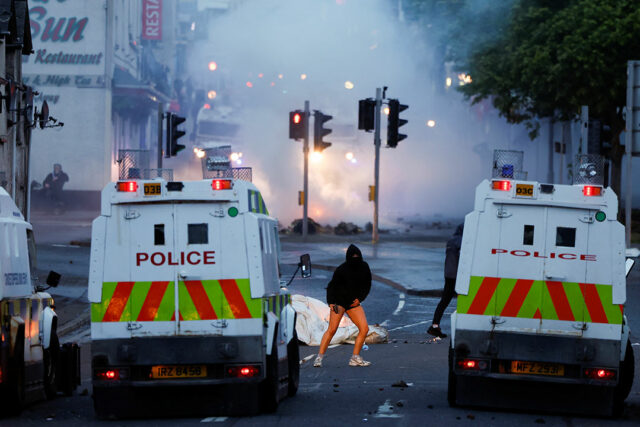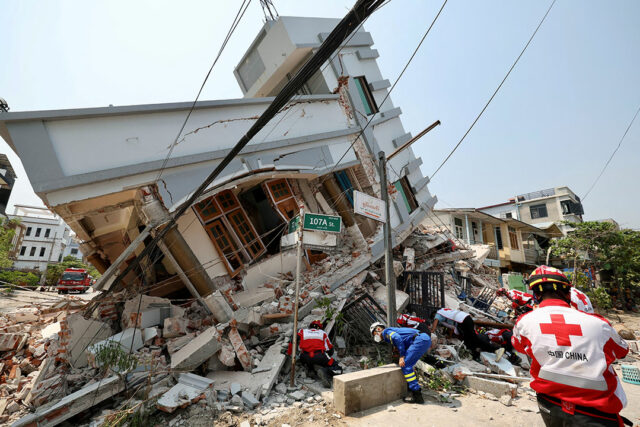WASHINGTON — US consumer prices increased less than expected in May as cheaper gasoline partially offset higher rents, but inflation is expected to accelerate in the coming months on the back of the Trump administration’s import tariffs.
The report from the Labor department on Wednesday also showed underlying price pressures muted last month. Economists say inflation has been slow to respond to President Donald J. Trump’s sweeping tariffs as most retailers are still selling merchandise accumulated before the import duties took effect.
Walmart last month said it would start raising prices in late May and June. Inflation was also being curbed by slower price rises for services, including subdued airline fares. The US Federal Reserve is expected to keep interest rates unchanged next Wednesday, with financial markets optimistic of a resumption in monetary policy easing in September.
“This report is another indicator that, before tariffs and economic uncertainty, we were well on our way to inflation falling back to target and that the main impediment to future progress is tariff-related price increases,” said Daniel Hornung, a senior fellow at MIT.
The consumer price index (CPI) increased 0.1% last month after rising 0.2% in April, the Labor department’s Bureau of Labor Statistics (BLS) said. Economists polled by Reuters had forecast the CPI climbing 0.2%.
A 0.3% increase in the cost of shelter, mostly rents, was the main driver of the rise in the CPI. Food prices rebounded 0.3% after dipping 0.1% in April. Grocery store prices climbed 0.3%, lifted by strong increases for cereals and bakery products as well as other food consumed at home.
Fruit and vegetable prices also rose, but consumers got some relief from a 2.7% decline in the cost of eggs. Meat, fish, nonalcoholic beverages and dairy products also cost less relative to April. Gasoline prices dropped 2.6%.
In the 12 months through May, the CPI advanced 2.4% after gaining 2.3% in April.
In addition to pre-tariffs inventory, economists say an uncertain demand environment was likely making some businesses hesitant to raise prices. Economists expect inflation to heat up from June and through the second half of the year and believe companies will raise prices incrementally to avoid a price shock for consumers and attracting the attention of the White House.
Mr. Trump last month told Walmart to “eat the tariffs” instead of raising prices. The administration has maintained that the duties, which are a tax, were paid by the exporting countries.
On Wednesday, Mr. Trump said a US-China trade deal was “done.” But duties on Chinese imports would still be way higher than they were in January.
Stocks on Wall Street rose. The dollar slipped against a basket of currencies. US Treasury yields fell.
Excluding the volatile food and energy components, the CPI gained 0.1%. The so-called core CPI rose 0.2% in April.
Shelter costs rose 0.3%, with owners’ equivalent rent increasing 0.3%. But the cost of hotel and motel rooms eased 0.1% and airline fares dropped 2.7%, signs of slowing demand.
SOME TARIFF-RELATED INCREASES
Healthcare costs rose 0.3%. Motor vehicle insurance increased 0.7% and personal care costs rose 0.5%. Overall, services costs gained 0.2% after rising 0.4% in April. Some economists are hopeful any tariff-related surge in inflation would be blunted by moderating services prices, especially wage growth.
“The economy is primarily a service sector economy and the biggest cost input is the cost of workers,” said James Knightley, chief international economist at ING. “A cooling jobs market implies that this too will help to mitigate the tariff impact.”
Prices for household furnishings and operations rose 0.3%. Used cars and trucks prices decreased 0.5% while those for new vehicles eased 0.3%. Apparel prices slipped 0.4%.
But there were some pockets of tariff-related increases. Prices for major appliances soared 4.3%, the biggest gain since August 2020, likely reflecting the first round of steel and aluminum duties. Toy prices jumped 1.3%, the largest increase since February 2023.
Prescription medication prices increased 0.6%. Overall core goods prices were unchanged after gaining 0.1% in April.
In the 12 months through May, the core CPI inflation increased 2.8% after rising 2.8% in April.
The Fed tracks different inflation gauges, including the core personal consumption expenditures (PCE) price index, for its 2% target. Economists estimated core PCE inflation rose 0.2% in May after edging up 0.1% in April. That would raise the annual increase in core inflation to 2.6% from 2.5% in April.
Those estimates could, however, change after the producer price index (PPI) data on Thursday.
Mr. Trump seized on the benign CPI report to demand that the US central bank lower rates by “one full point.”
But higher prices are likely coming. The Fed’s Beige Book report last week noted “widespread reports of contacts expecting costs and prices to rise at a faster rate going forward.”
The CPI data will come under close scrutiny in the months ahead also for another reason. Last week the BLS, which also compiles other economic releases including the closely watched employment report, announced the suspension of CPI data collection in three cities because of resource constraints.
The BLS, like all government agencies, has been severely affected by mass firings, voluntary resignations, early retirements and hiring freezes, which are part of an unprecedented campaign by the White House to drastically reduce the size of government and remake it.
The BLS has also announced that it would, effective with the release of the July PPI data in August, end the calculation and publication of about 350 indexes. That would include data from PPI industry, commodity, final demand-intermediate demand and special index classifications.
Amid estimates that BLS staffing was down by at least 15%, that is raising concerns about data quality. But the BLS said on Tuesday its published data met rigorous standards. It, however, did not address staffing issues.
“Data quality is evaluated through measures of variance, bias studies, and assessments of survey methods,” the agency said in a statement to Reuters. “BLS continues to evaluate data quality.” — Reuters










